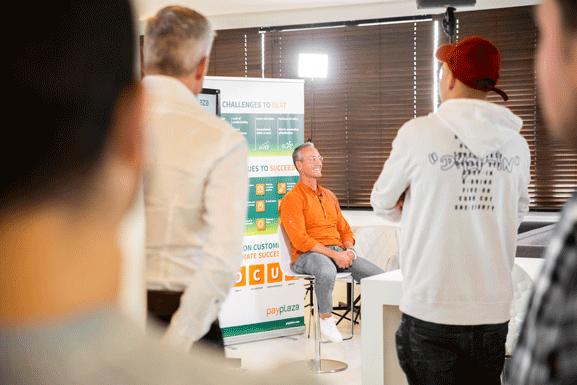
Press Release PayPlaza unveils new corporate identity
Press release
PayPlaza unveils new corporate identity
New brand design, website, and logo
PayPlaza is on a mission to make payment acceptance easy, from anywhere in the world to everywhere in the world. To help communicate its mission, PayPlaza is launching a new corporate identity.
With its new brand design, PayPlaza has created a uniform, modern, and authentic group brand experience amongst its staff, partners, resellers, and customers. Featuring a straightforward two-dimensional design, the new PayPlaza logo reflects the company’s core identity – upbeat, no-nonsense, can-do, and down-to-earth. The new design aims for high flexibility and is intended for a wide variety of digital applications.
“Our new brand design is the starting point of a new era for PayPlaza”, says CEO Edgar Plasa. “By formulating our true purpose and company values as well as new partner programs and clear product features, the PayPlaza brand is undergoing a fundamental transformation towards a future of FOCUS and Point-of-Sale (POS) Payment Acceptance made easy. Therefore, now is the right time to make our new brand values visible to the outside world. Together with the new responsive website, PayPlaza offers an enriched user experience, whichever the device and whatever the point of access. Our goal is to create a community where our employees, our partners, and their merchants can share their views, both on PayPlaza and on the Point-of-Sale Payment Acceptance industry as a whole”, Plasa adds.
The new corporate identity reflects PayPlaza’s vision
Creative marketing agency “Be A Legend” played a key role in the development of PayPlaza’s new corporate identity and strategic foundations. “For the new brand design, we’ve created a two-dimensional, authentic, modern, and flexible design. This design reflects PayPlaza’s corporate identity as well as its ambitions and its vision for the future”, Nadine Lucas states.
New website features available end of 2020
“PayPlaza commissioned us to implement a new European brand experience on all channels and across all touchpoints. As a general principle, PayPlaza aims to present itself as a dependable, innovative, and resourceful business that keeps their stakeholders’ interests at heart, whether they be its partners, resellers, customers, or employees”, Lucas explains. By the end of 2020, the company website will therefore include new features, such as a partner portal, how-to videos, and video testimonials by partners, merchants, and employees.
PayPlaza’s new corporate identity will be reflected not only in its online and offline communication but also in all of its Payment Acceptance solutions – software as well as hardware.
About PayPlaza
PayPlaza is a leading supplier of world-renowned payment terminals and Point-of-Sale (POS) software in Europe. In the Benelux, PayPlaza is part of the top three in POS payment software. In 2010 PayPlaza developed a payment platform that enables unique solutions for card acceptance at any point of sale, giving the customer a true omnichannel experience. Since 2012, PayPlaza’s solutions have been rolled out throughout Europe. PayPlaza’s solutions support all languages and currencies and meet local card acceptance requirements, doing so at local cost and in accordance with country-specific requirements.
About Be A Legend
Be A Legend is a full-service creative marketing agency based in The Netherlands. Its mission is helping companies of any size find their true purpose and bring their brand story to life. Be A Legend believes a company’s current and future customers are its primary asset. By inviting customers and prospects to fully engage with its client’s story, strategy, and purpose, Be A Legend helps create and develop brands that turn customers into brand ambassadors. Be A Legend combines insights and strategy with great creative concepts and winning execution, bringing the entire customer journey to life: from pre-boarding to legends.

